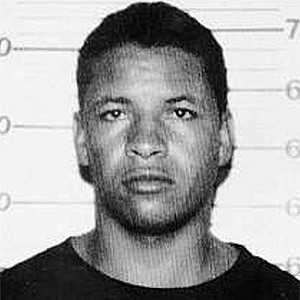
b: 1965
Dandeny Muñoz Mosquera
Summary
Name:
Dandeny Muñoz MosqueraNickname:
La QuicaYears Active:
1978 - 1991Birth:
August 27, 1965Status:
ImprisonedClass:
Serial KillerVictims:
220+Method:
Bombing / ShootingNationality:
Colombia
b: 1965
Dandeny Muñoz Mosquera
Summary: Serial Killer
Name:
Dandeny Muñoz MosqueraNickname:
La QuicaStatus:
ImprisonedVictims:
220+Method:
Bombing / ShootingNationality:
ColombiaBirth:
August 27, 1965Years Active:
1978 - 1991Date Convicted:
December 20, 1994bio
Dandeny Muñoz Mosquera was born in Medellín, Colombia, on August 27, 1965. His family life was marked by both law enforcement and faith in which his father worked as a police officer, and his mother was active in the evangelical church. While little is known about his early childhood in detail, it’s reported that Dandeny and his brother Brance (“Tyson”) grew up in a rough environment as the city of Medellín became the world capital for drug trafficking and cartel violence. By his early teens, Muñoz Mosquera had drifted into gang life, reportedly joining the Medellín Cartel at just twelve years old. His brother, also deeply involved in cartel operations, allegedly played a major role in introducing Dandeny to organized crime.
Known by the childhood nickname “La Quica” due to his resemblance to a female relative, Muñoz Mosquera quickly gained a reputation for violence. Some accounts say he briefly joined the Colombian army as a teenager, but by the mid-1980s, he was back in the criminal world. He was arrested several times on minor charges, but by his late teens, he had become a full-time cartel enforcer. During this period, Medellín was a battleground, and La Quica was known to authorities as an expert in bomb-making and murder. He was feared for his willingness to kill rivals, police, and anyone considered a threat to the cartel, eventually rising to be called “chief assassin” for Pablo Escobar.
murder story
Muñoz Mosquera’s career as a hitman became notorious in the late 1980s as the Medellín Cartel went to war with the Colombian government and rival gangs. U.S. authorities have linked him to the deaths of more than 220 people, including over 40 police officers in Medellín, many of whom were targeted for assassination under a bounty system paid by Escobar. He is also believed to have organized and trained other teenage assassins, creating a pipeline of violence for the cartel. Colombian authorities implicated him in multiple high-profile attacks, including the December 1989 bombing of the Administrative Department of Security headquarters and a rocket attack on the U.S. Embassy in Bogotá.
The most infamous crime attributed to La Quica is the bombing of Avianca Flight 203 on November 27, 1989, which killed 110 people. The attack was ordered by Escobar to assassinate a political rival but became one of the deadliest acts of aviation terrorism before 9/11. After a series of arrests and escapes in Colombia, including a dramatic prison break in April 1991, Muñoz Mosquera fled to the United States. He was arrested in Queens, New York, in September 1991, after being caught with a fake passport. He was initially convicted of passport fraud but was soon charged with a sweeping list of crimes including conspiracy, racketeering, murder, and aircraft bombing.
His first U.S. trial ended in a mistrial, but in the second trial in 1994, he was found guilty on all counts, including the bombing of Avianca 203. He was sentenced to 10 life terms plus 45 years, making him one of the most heavily sentenced drug cartel hitmen in U.S. history. His conviction was the first under a 1956 U.S. law making the bombing of a civilian airliner a federal crime and under terrorism statutes allowing prosecution of foreigners if Americans were among the victims. Judge Sterling Johnson Jr. said at sentencing, “Not only are you an evil man, but the things you did, you enjoyed doing.” Some questions remain about the evidence used in his conviction, as even Colombia’s attorney general at the time said there was no direct evidence linking him to the Avianca bombing. Still, he remains incarcerated in the United States as of 2025, serving his sentence at USP Atwater in California.